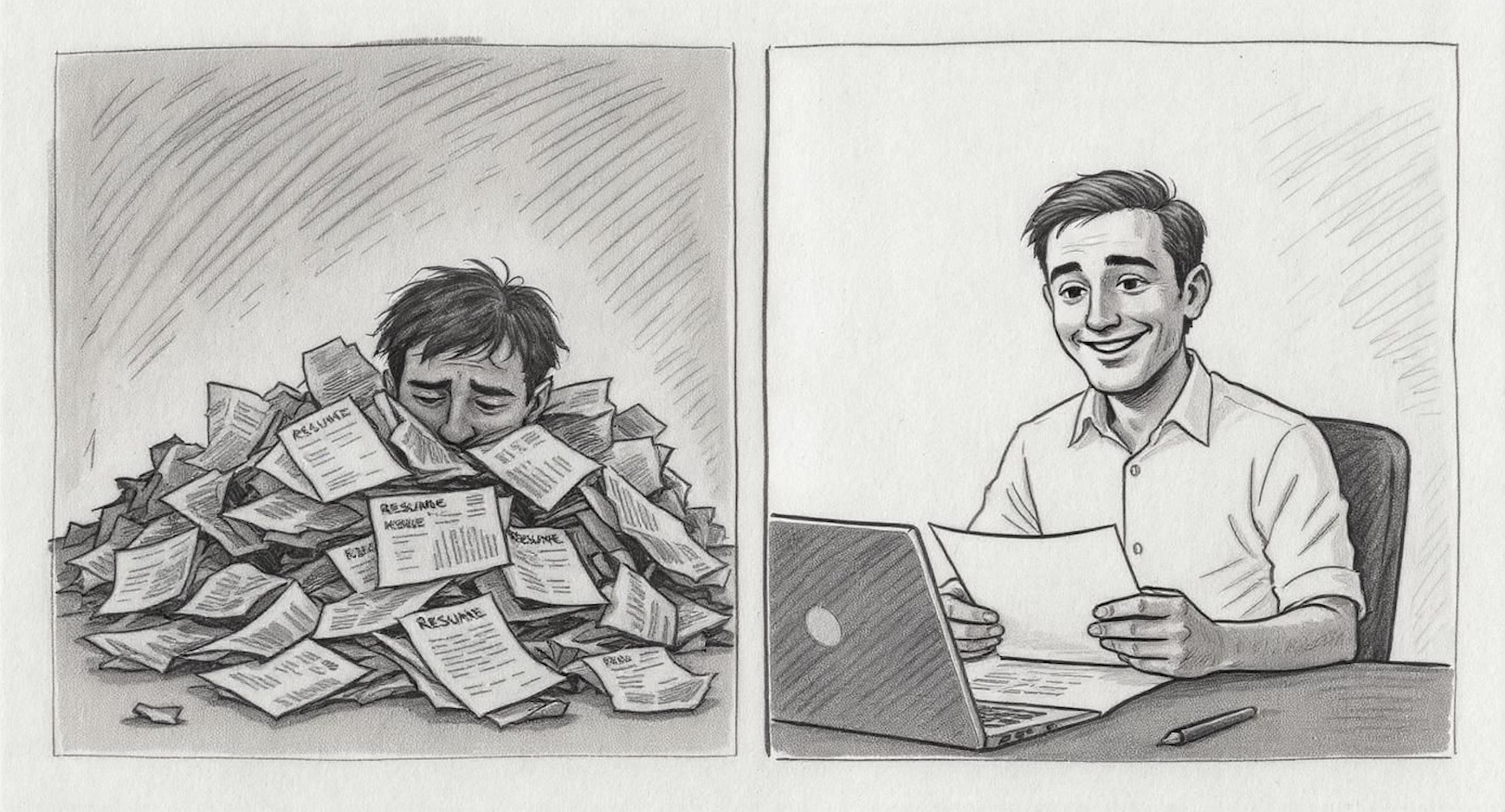How to Improve Your Resume Before You Apply for a Job: 5 Tips for 2025

Sending out resume after resume only to hear... nothing? You're not just imagining it. Many job seekers are finding the 2025 market tougher than ever, and that silence from potential employers can be frustrating.
The good news is, you have more power than you think. Often, the barrier between you and an interview isn't your experience - it's how you present it. With a few smart updates to your resume, you can dramatically increase your chances of getting noticed.
So here's our advice on how to fix your resume and stand out in today's competitive job market.
1. Tailor Your Resume for Every Single Job
If you only take one piece of advice, make it this one. Sending the same generic resume for every application is like trying to open different doors with the same key - it's just not going to work. Every job description is a cheat sheet, telling you exactly what the employer wants to see.
So start by reading the description carefully and looking for the specific skills and responsibilities they highlight. Use similar language and keywords throughout your resume to show you're a strong match for the role. This signals to both the recruiter and any automated systems that you've paid attention.
But let's be real - tailoring every single resume is going to take a lot of time, especially when you're playing the numbers game and applying to dozens of jobs. It's tedious and time-consuming. That's exactly why tools that automate the process are becoming so popular. For instance, ApplyMate was built to solve this exact problem. It scans your resume against the job description, weaves in the right keywords, and trims the fluff to make sure the most relevant information stands out.
2. Highlight Achievements, Not Just Responsibilities
Recruiters know what a "Sales Manager" or "Project Coordinator" generally does. What they don't know is what you accomplished. Vague responsibilities like "managed accounts" or "led team projects" don't leave an impression.
Instead, focus on quantifiable results. Use action verbs and frame your accomplishments using the CAR method:
Challenge: What was the problem or situation?
Action: What specific action did you take?
Result: What was the measurable outcome of your action?
Pick achievements that are most relevant to the job you're applying for. For example, instead of saying "Responsible for email marketing," try:
"Increased new user sign-ups by 30% in six months by developing and launching a targeted email welcome series."
This shows your direct impact and gives the employer a clear picture of the value you can bring.
3. Keep It Clean, Readable, and ATS-Friendly
Recruiters spend just a few seconds on each resume. If yours is a cluttered mess of weird fonts and tiny text, they'll move on. But it's not just about humans; your resume first needs to get past the Applicant Tracking Systems (ATS).
These systems scan your resume for keywords and specific formatting. If the ATS can't parse your resume, a human will never see it.
Layout: Stick to a clean, modern template. Avoid excessive colours, graphics, or columns that can confuse an ATS.
Fonts: Use a professional, easy-to-read font like Calibri, Arial, or Georgia, with a size between 10-12 points.
Length: Keep it to one page if you have less than 10 years of experience, and a maximum of two pages for more seasoned professionals.
Structure: Use clear headings (e.g., "Work Experience," "Skills," "Education") and bullet points to make your resume easy to skim.
This is another area where a specialized tool can give you an edge. ApplyMate automatically formats your resume to be clean, professional, and easily readable by all major ATS platforms, ensuring your application gets a fair look.
4. Don't Sweat Employment Gaps
Life happens. More and more people have gaps in their work history, and recruiters are more understanding of this than ever before. The key is to address them confidently, not to hide them.
Reframe the Narrative: If you can, list productive activities you did during your time off, like freelance projects, volunteer work, or professional courses you completed.
Be Honest (but Brief): You don't need to go into great detail. A simple, positive explanation is all you need. Focus on what you learned and why you're ready to get back to work.
Here's an example of how to frame it in your experience section or cover letter:
"Took a planned career break from 2023-2024 to support a family member. During this time, I completed certifications in Project Management and Google Analytics and am now eager to apply these enhanced skills in a full-time role."
5. Proofread Like Your Job Depends On It (Because It Does)
A single typo can be the reason your resume gets tossed. It signals a lack of attention to detail - a trait no employer is looking for.
Don't rely on your word processor's built-in spellchecker alone. Read your resume out loud to catch awkward phrasing. Ask a friend to look it over. For an extra layer of polish, use tools like Grammarly or Hemingway Editor to check for grammatical errors and improve readability. Make sure everything looks right in both Word and PDF formats before you hit "send."
Your resume is your foot in the door. By tailoring it to each opportunity and presenting your accomplishments clearly, you're not just applying for a job - you're making a compelling case for why you're the right person for it.
With these tips, and a little help from smart tools like ApplyMate to handle the heavy lifting, you'll be ready to make a strong impression and start landing the interviews you deserve.